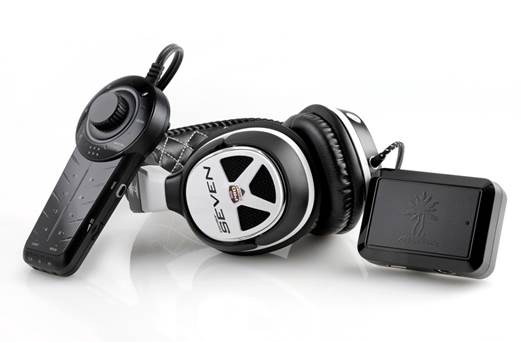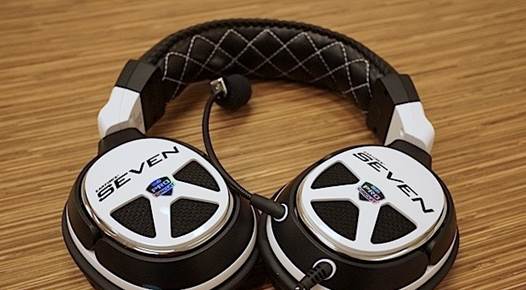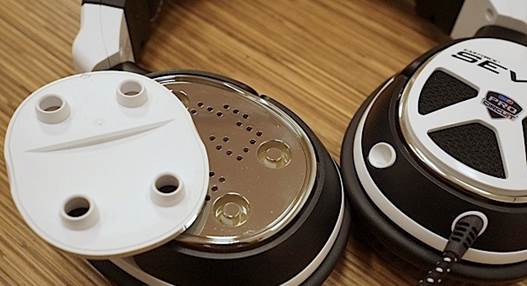Please get away from your seat – alright,
you do not really need to do it. But, of course, Turtle Beach hopes that its
new headset will not make you stay there forever. After months of cryptic ad,
it finally is here. This is the Seven Series, the company’s first headset
officially produced for Major League Gaming tournaments. It is a trophy,
according to the contract, that was awarded for the Astro Mixamp system and
A40. But with Turtle Beach, this is the first time: we have never seen the
company following an intense ad this wide, the target that requires not only
the cross-platform gaming support, but also a full design flexibility for
everyday listening.
The Seven Series series includes the Z for computers,
the M for mobile devices and the XP for cross-platforms. With this review, we
will focus on the XP package ($ 280), which includes a headset, Audio Control
Unit with virtual 5.1 surround sound support and a console called the Console
Interface adapter. (Currently, the last 2 components will not be sold as
standalone products). While the headset itself looks like the star of the show,
in our eyes, the ACU and CI offer the most exciting prospects. When combined,
they enable virtual surround sound and voice chat with any wired headset on any
platform (much like Mixamp) while placing the preset audio options that have
been tested and proven by Turtle Beach at your fingertips. So how does it feel
when you use it? Let's find out now.

The
Turtle Beach XP Seven Series Headset
Hardware
When "taking the device out of the box",
you will find headphones, Audio and Console Interface Control Unit, as well as
many cables to connect. In short, you have a secondary 3.5mm male-to-male wire,
3.5mm cables, one with remote / inline mic and one no, a Toslink cable, a 2.5mm
cable for the Xbox controller, and wire extension cable to the ACU.
The headphone is decorated in black and
white, even in the detachable cables – a color scheme we do not like much. In
fact, we feel a bit awkward when carrying it outside - it's just a little bad,
that's all. Although it is mainly made of plastic with matte and shiny surface,
it still feels solid and not hollow. While it may feel superior to the Trittons
headsets, it still needs some work to be done than what Astro offers at the
same price segment. However, please make no mistake: this is the best build
quality we've seen from the company since the HPX metal model.
The leather headband and memory-foam-loaded
earpads offer comfort for longer play sessions, and the earcups which are mild
enough to protect the cartilage in your ears. The earcups are folded to lie
flat on the collarbone or are easily tucked into your everyday bag. The general
clamping power is a little tight at first, but after wearing them a few times,
we found several loose headsets. By following the closed design, the isolation
from external sounds is very good even on the subway. Currently, there is no
option for cloth pads – Turtle Beach says most professional gamers that the
company had consulted throughout the product development stage are not afraid
to lose some breathability to prioritize the better noise isolation. However,
we would like to see an option for those who hate having sweaty ears.

We
would like to see an option for those who hate having sweaty ears.
As a model from Astro and Tritton, the Seven
headset has earcup headphones with interchangeable faceplates. While they are
not available, you can order a custom design in particular. Strangely, the headset
comes with mesh opening that refers back headphones, but really it's just an
unnecessary design feature. The faceplate flickers in certain positions, but
you will definitely need the help of a coin to pry them out – we still prefer
to connect magnets that Astro uses than the snap-on designs from TB and Tritton.
Coming to the bottom of the left earcup,
you will find one 3.5mm microphone and a short cable with a quick disconnect
dongle attached at one end. We are less worried about the fact that the cable
can be pulled from the earcup couch thanks to its cloth wrap and rubber
connection, but the 9-pin proprietary connector ensures that you're stuck with
Turtle Beach to replace the cable. The company said it is for grounding
purposes, even though it is hard to accept when most headphones in this price
segment are used to connect the 3.5mm standard.
Apart from that, the entire quick
disconnect feels unusually large with one cable connected. It is particularly
troublesome when you connect the cable with a remote and inline mic that comes
together, because it's huge compared to the inline remote on most headphones.
On the positive side, connections are tight and assuring, but the remote
location of the button makes it hard to find if you do not look down at it. Do
not misunderstand, it is quite useful, but the user experience is not always a
smooth feeling.

It
is quite useful, but the user experience is not always a smooth feeling.
Therefore, we do not like the design of the
headset, but the Audio Control Unit is a different story. This is a great
change for the game console users than what is available to the previous
cross-platform Dolby surround sound decoder. The wired remote is powered by
this bus, which definitely feels firm in the hand, whose function takes
precedence over the design. Its round top handles the majority of volume and
surround sound settings, while the rest of the remote's top section is divided
into eight preset selectors for the game audio to come in in either speaker or
headphone mode. Remarkably, all the preset and surround sound selectors are
capacitive. At first we were pretty skeptical, but thanks to the built-in two-second
delay between the touch choices, we always had what we wanted – and the delay
was not too noticeable. Better yet, every type of our clicks was recognized
even with sweaty hands.